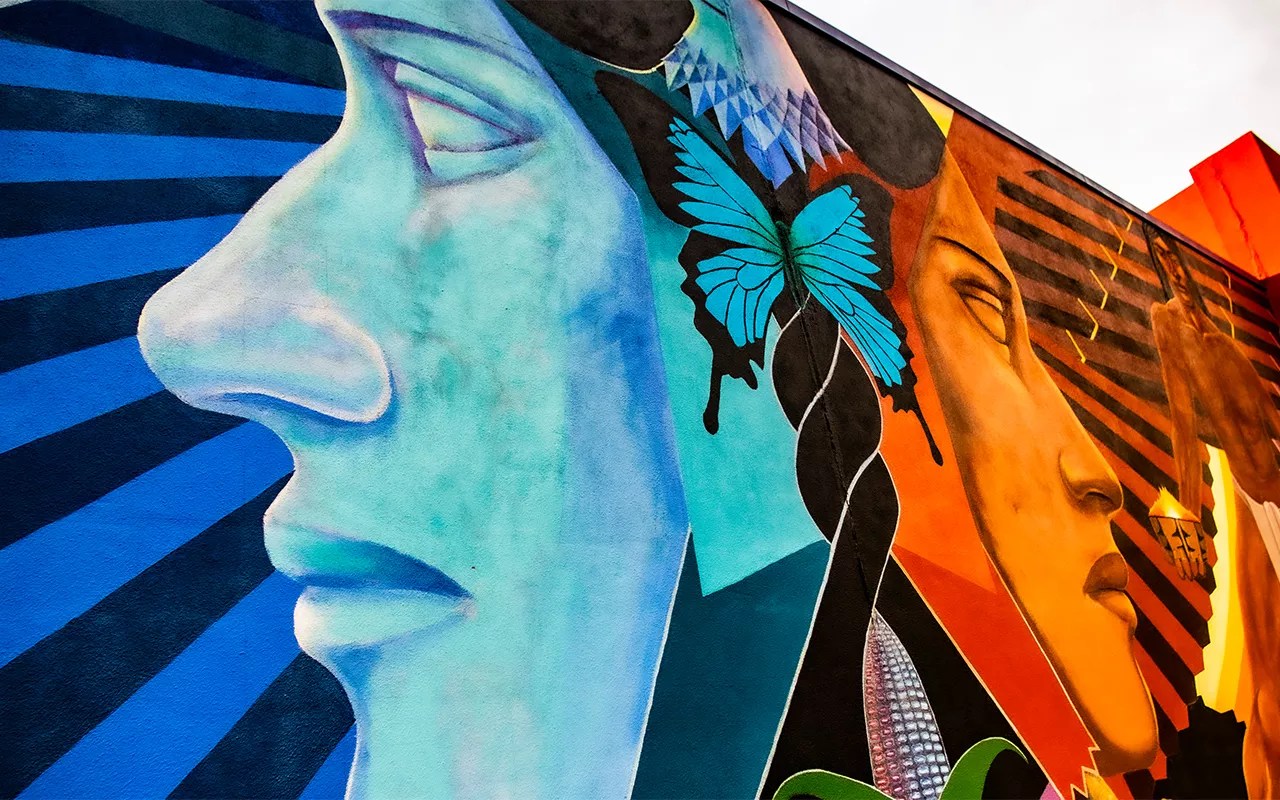
Evan Semón

Audio By Carbonatix
Denver has a soul.
It inhabits the trapezoid space that stretches from Colfax Avenue below the Auraria campus all the way to Sixth Avenue, over to Speer Boulevard and along the South Platte River.
Welcome to La Alma. Or should that be El Alma? Alma, which means “soul” in Spanish, is a masculine word. But in Denver, the neighborhood became known as La Alma.
“This has been brought up a lot, that it really should be called El Alma,” says Lucha Martinez de Luna, the daughter of prolific muralist Emanuel Martinez and founder of the Chicano/a/x Community Murals of Colorado project, which works to preserve this state’s murals and its Chicano heritage. “But I think it’s interesting that the community decided to keep it La Alma, because it speaks to something more profound.”
It speaks to the heart and soul of Denver.
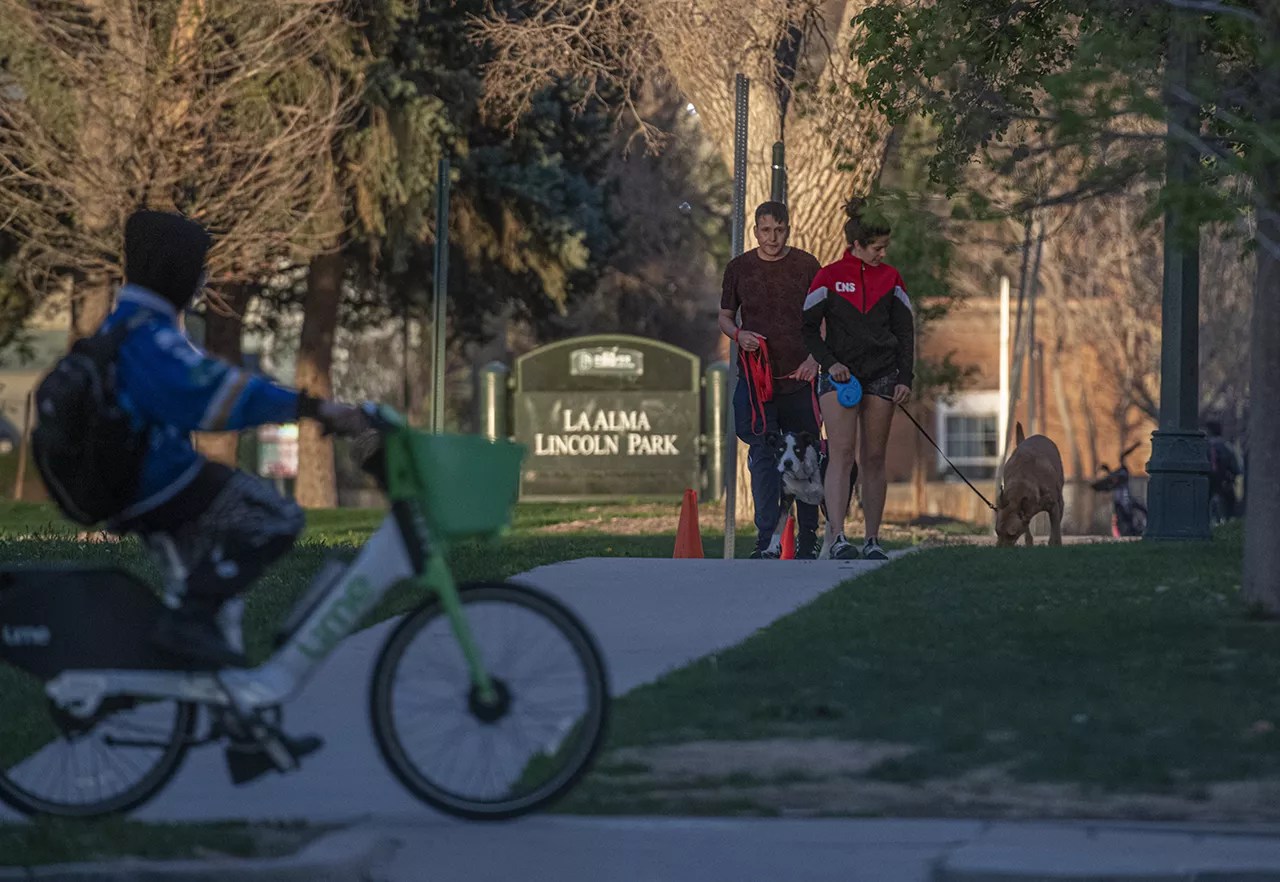
La Alma Lincoln Park is Denver’s oldest residential neighborhood.
Evan Semón
Long before gold was found at the confluence of the South Platte and Cherry Creek, the Apache, Ute, Cheyenne, Comanche and Arapaho camped in the area, though regular flooding prevented any kind of permanent settlement.
That changed with the discovery of gold. As fortune seekers headed west, the Auraria Town Company formed in 1858, setting up a town that competed with the new settlement of Denver just across the creek. The two rivals merged in 1860, compromising to work together on what was fast becoming a boomtown. In the 1870s, A.C. Hunt, who’d served as Colorado’s fourth territorial governor, from 1867 to 1869, homesteaded what would one day become La Alma; the City of Denver purchased Hunt’s former homestead in 1885. Five years later, it was named Lincoln Park, after the late U.S. president.
By then, small, squat cottages had already sprung up in the area known as Hunt’s Addition, which coincides with the La Alma of today. Historic Denver refers to this as the city’s oldest residential neighborhood, though that title was once claimed by nearby Auraria, which was largely wiped off the map for the creation of an urban campus fifty years ago.
For much of its history, the neighborhood has been home to immigrants and the families of Denver’s manual laborers. In Hunt’s time, many of them worked at the nearby Burnham Yards, one of the country’s most significant rail yards for 150 years, until Union Pacific shut things down in 2021 (and then sold the property to Denver for $50 million so that the city could expand I-25 and RTD light-rail lines).
The railroads shaped Lincoln Park’s working-class character for generations as immigrants – including those of German, Italian, Irish, Eastern European, Jewish and Mexican descent – came to work in the yards. Then in 1942, the federal government started the Braceros program, which brought in labor from Mexico to fill the void left by men who had gone to fight in WWII. One of the benefits of the program was free housing.
That year, the Denver Housing Authority opened the city’s first housing projects in north Lincoln Park. Originally the projects were for whites only, but the DHA lifted that restriction later in the decade. The combination of work and cheap housing attracted many Mexican immigrants to Lincoln Park during the 1940s.
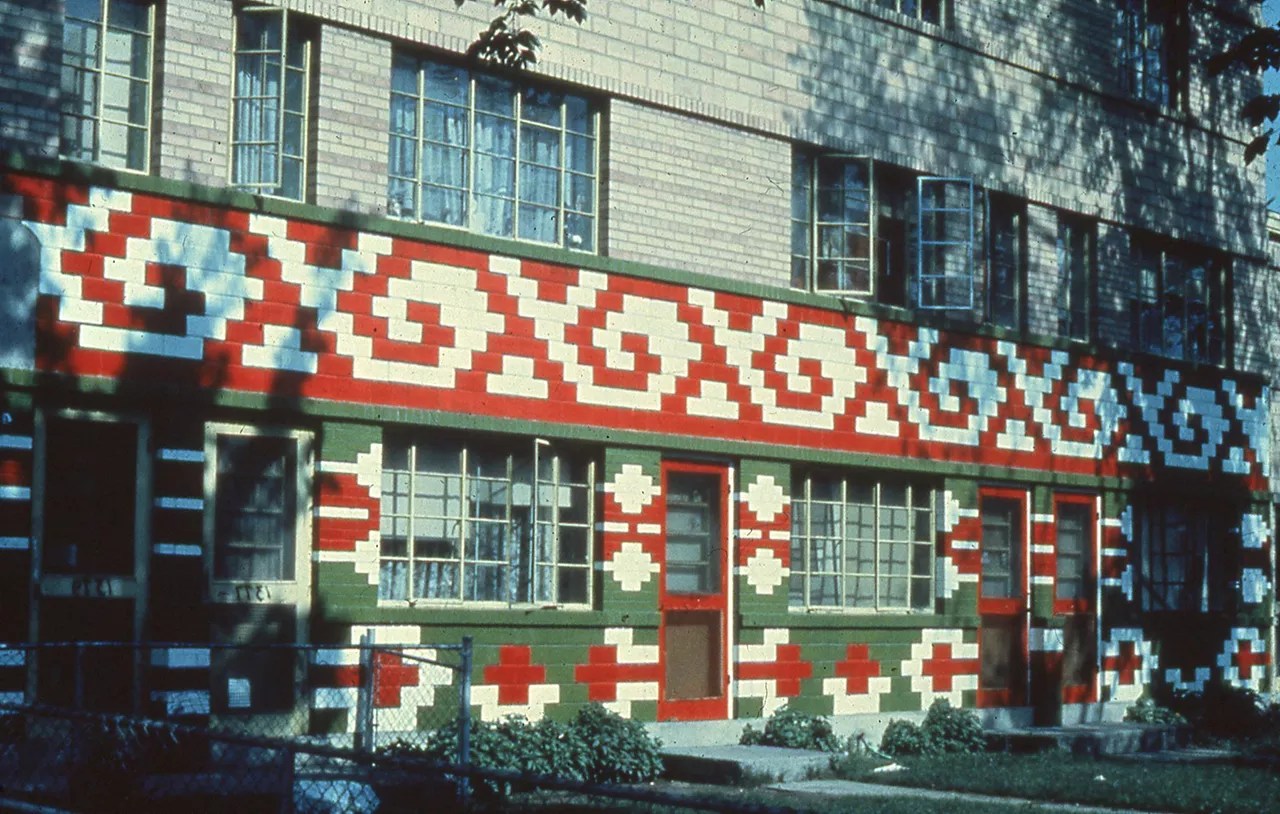
One of Emanuel Martinez’s decorative designs on a housing project in La Alma.
Lucha Martinez de Luna
Soon the DHA housing was dominated by Mexican residents, who called them the “red projects” and the “yellow projects” according to the color of the bricks used to build them.
During the decades spanning 1940 to 1970, more than 80 percent of U.S. Census respondents in the neighborhood identified as “persons of Spanish language or surname,” according to Denver records. As the demographics of the neighborhood shifted, the private dwellings in the area began to reflect this shift. While the homes were still brick – mandated decades before by Denver City Council after repeated fires – the Latino families showed their Southwestern roots by covering some of the brick with stucco, made by mixing cement and sand, like the adobe houses seen in New Mexico and Arizona. Many homes had short iron and chain-link fences ringing their small front yards.
The 1960s saw changes in Lincoln Park that went far beyond the physical, however. Latinos began taking pride in their heritage after decades of being made to feel ashamed of their identity.
“Even though we had Spanish roots, a lot of the youth from this generation, when they spoke Spanish in school, they were actually beaten with rulers on their hands,” says Martinez de Luna, adding that her mother experienced that growing up in northern Colorado. “They were beaten if they spoke Spanish, so were they knowledgeable about the Spanish language? Not entirely, because they were denied speaking it.”
Her father says that his parents, who came to the U.S. in 1926, refused to teach him Spanish because they wanted him to fit in, and they thought that sticking to English would help him succeed in life.
“And they wouldn’t allow Spanish to be used in schools,” Martinez recalls. “It was very difficult for people from New Mexico, who grew up talking in Spanish and weren’t allowed to use it.”
“It was very difficult for people from New Mexico, who grew up talking in Spanish and weren’t allowed to use it.”
Growing up in Denver, he remembers that Spanish-speaking classmates were fined five cents for each word they spoke in the foreign language. “They were forced to speak English,” he says. “And unfortunately, our parents at that time didn’t want us to learn Spanish, because they wanted us to assimilate into the melting pot, so that’s what a lot of people did.”
But in the ’60s, activists decided that embracing their history included giving their neighborhood a new name, one that embraced their culture. There was already another Lincoln Park – in front of the Colorado Capitol – and residents of this Lincoln Park “certainly didn’t identify with Abraham Lincoln,” Martinez says.
Among the names they considered was Semilla, which means “seed,” and Aztlán, which refers to the mythical homeland of the Aztecs.
“We decided La Alma would be more appropriate for the community because of its meaning,” Martinez says. “People in the community were really comfortable with that, because it was a Spanish name and something they could really identify with at the time.”
But because many in the neighborhood had never spoken Spanish, they were unaware of the language’s grammar rules – and their exceptions.
Unlike in English, the article “the” is gendered in Spanish, and the right form must be used to match the gender of the word. Words that end in -a tend to take the feminine “la” rather than the masculine “el.” La luna, la tierra, la lluvia, las frutas and la niña, for example, all follow the rule.
But there are exceptions, such as el planeta, el agua, el día, el aroma and el alma.
The name of the neighborhood “speaks to a larger problem that was happening in the United States, especially in the Southwest,” Martinez de Luna says. “The reality is, yeah, they thought it was La Alma, and they called it La Alma, and we just all decided at some point, okay, it’s going to be called La Alma, even though it’s incorrect.”
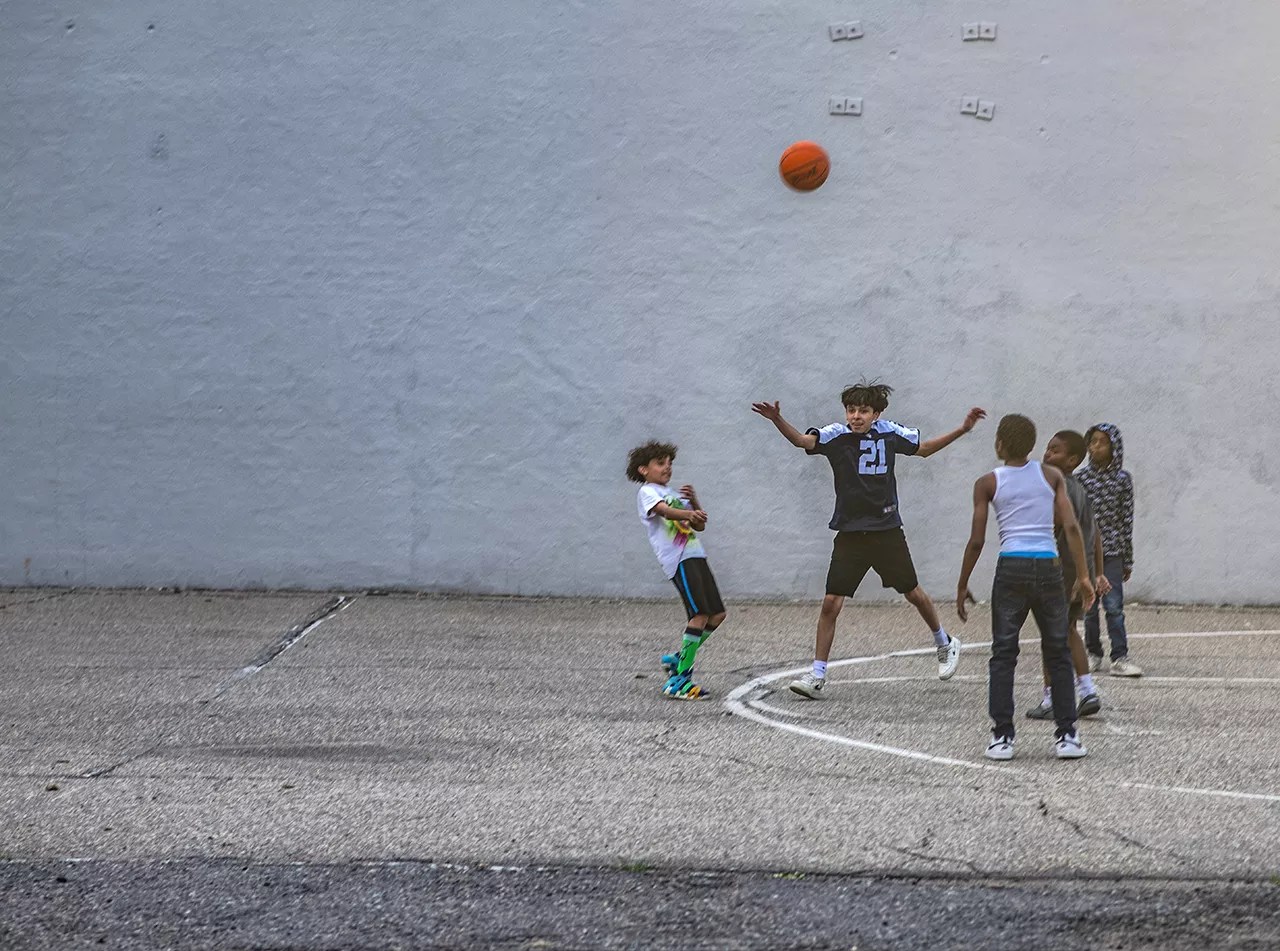
Sports brought Chicano kids together around town, including La Alma Lincoln Park.
Evan Semón
La Alma emerged during a decade of political movements, including protests against the Vietnam War and the fight for women’s liberation. Denver was ground zero for the Chicano movement, which promoted pride in the population’s Mexican and Hispanic origins.
Boxer-turned-activist Rodolfo “Corky” Gonzales started the Crusade for Justice, a Chicano-rights advocacy group, and played a key role in organizing the West High School blowouts of 1969, which saw students at that school in the Lincoln Park neighborhood walk out to protest racism and show solidarity with the 1968 blowouts in Los Angeles.
Martinez, who attended Manual High School in the area then known as the Eastside, joined the demonstrations and was even arrested.
Tony Garcia, executive artistic director of Su Teatro, one of the longest-running Chicano theater companies in the country, grew up in Auraria in the ’50s and ’60s. In 2010, Su Teatro found a permanent home in the heart of La Alma, in the old Denver Civic Theater on Santa Fe Drive. Garcia wrote a play about the West High blowouts in 2019, and likens the renaming of Lincoln Park to La Alma with what the Chicano movement did for Mexicans in Denver.
“Chicano was a re-identification of ourselves,” Garcia says. “It was about your identity, who you are, and the movement was all about cultural identity, who are we, where do we come from. That was such a revelation. You didn’t come from anywhere. You’re where your home is.”
When the West High students walked out of their school, they met in the green space at Lincoln Park, remembers Jay Alires, who grew up in the neighborhood. He went to Mullen High School and wasn’t at the blowouts, but he recognized their impact. The protests “created a generation of activists,” says Alires.
Many had already become politicized after the 1968 death of Louie Pineda, who was shot twice in the back as he ran from police after he’d been caught vandalizing parked cars at O’Meara Ford at Mariposa Street and Colfax Avenue, on the northern edge of La Alma. Garcia says he remembers walking up and down the streets and seeing signs that read “Justice for Louie” in yards and windows.
“It activated the neighborhood quite a bit,” Garcia says. “I didn’t know him. He was related to friends of mine, and I was surprised that they had become activated by that.”
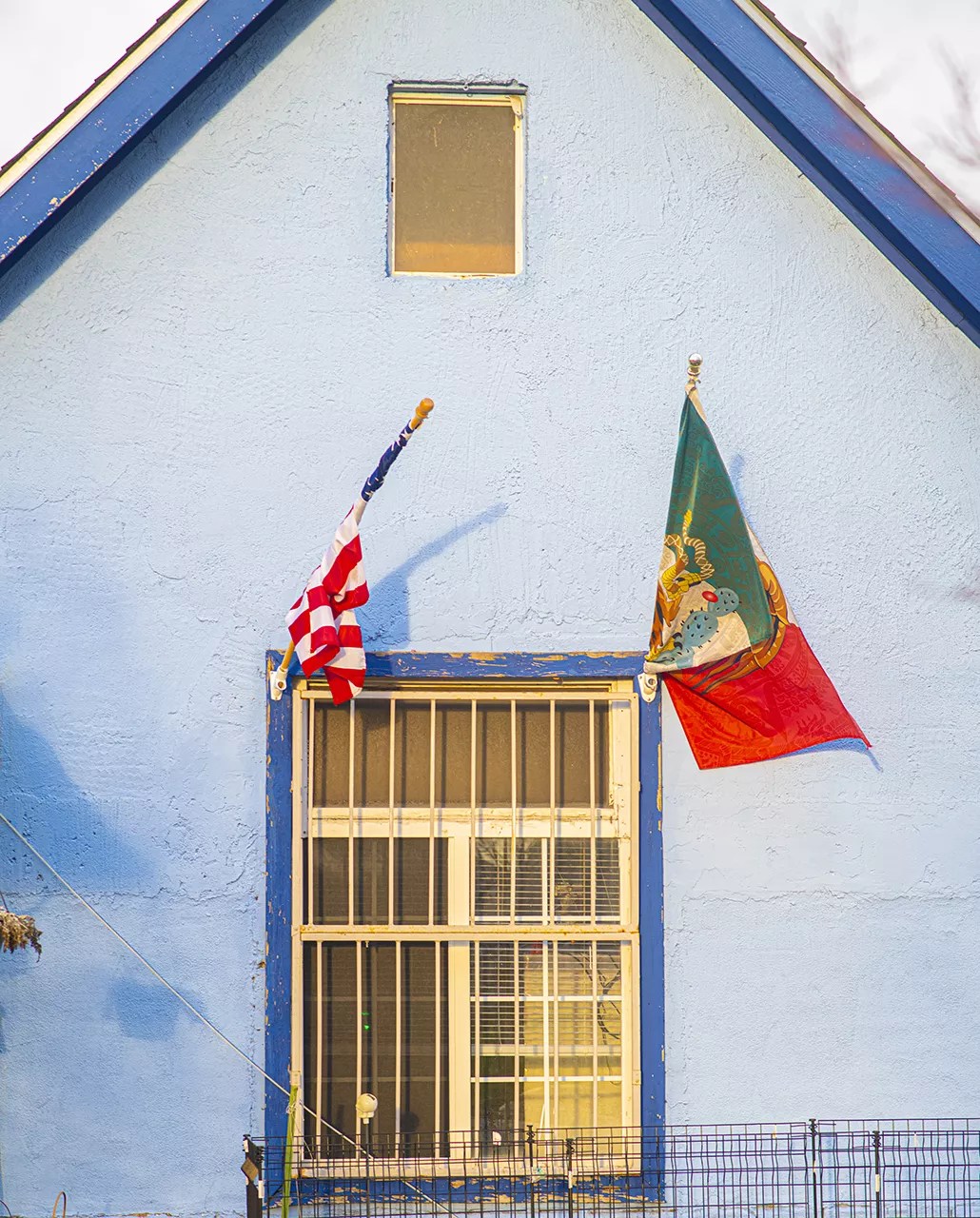
American and Mexican flags grace a neighborhood home.
Evan Semón
Chicano activism was focused in Lincoln Park, Garcia recalls, but it soon spread to other parts of Denver.
The life of young Latinos in Denver was heavily defined by sports. The Lincoln Park neighborhood had basketball courts, a baseball field and an open space used for football, and kids from the area would travel to other neighborhoods, such as Columbus and Curtis Park, to compete against young Latinos and Italians there. Meanwhile, Latinos who grew up in other parts of Denver came to La Alma to play.
“Mexicans were really concentrated in the Westside neighborhood and in the Eastside, around Five Points,” Garcia explains. “But in the Westside, it was concentrated. We grew out of the Auraria neighborhood.”
Although Garcia was from Auraria, he saw himself as a Westsider because “it was all the Westside at the time.”
Like La Alma, the Auraria neighborhood was predominantly Mexican by the late ’60s. The 1965 flood that had caused significant damage to the metro area set in motion plans to redevelop Auraria into an urban campus; Latino families were told to leave their homes in 1972 so that the city could complete the project.
Chicanos who were already wary of being displaced from areas that had been their homes for multiple generations looked at what was happening to Auraria and became more active in claiming their own neighborhoods, particularly Lincoln Park.
“Consequently, you had people who started to talk about community control, which is one of the tenets of the Chicano movement,” Garcia says. “This neighborhood was ripe for that because we were in those institutions where we could gain some level of political power and could have some say.”
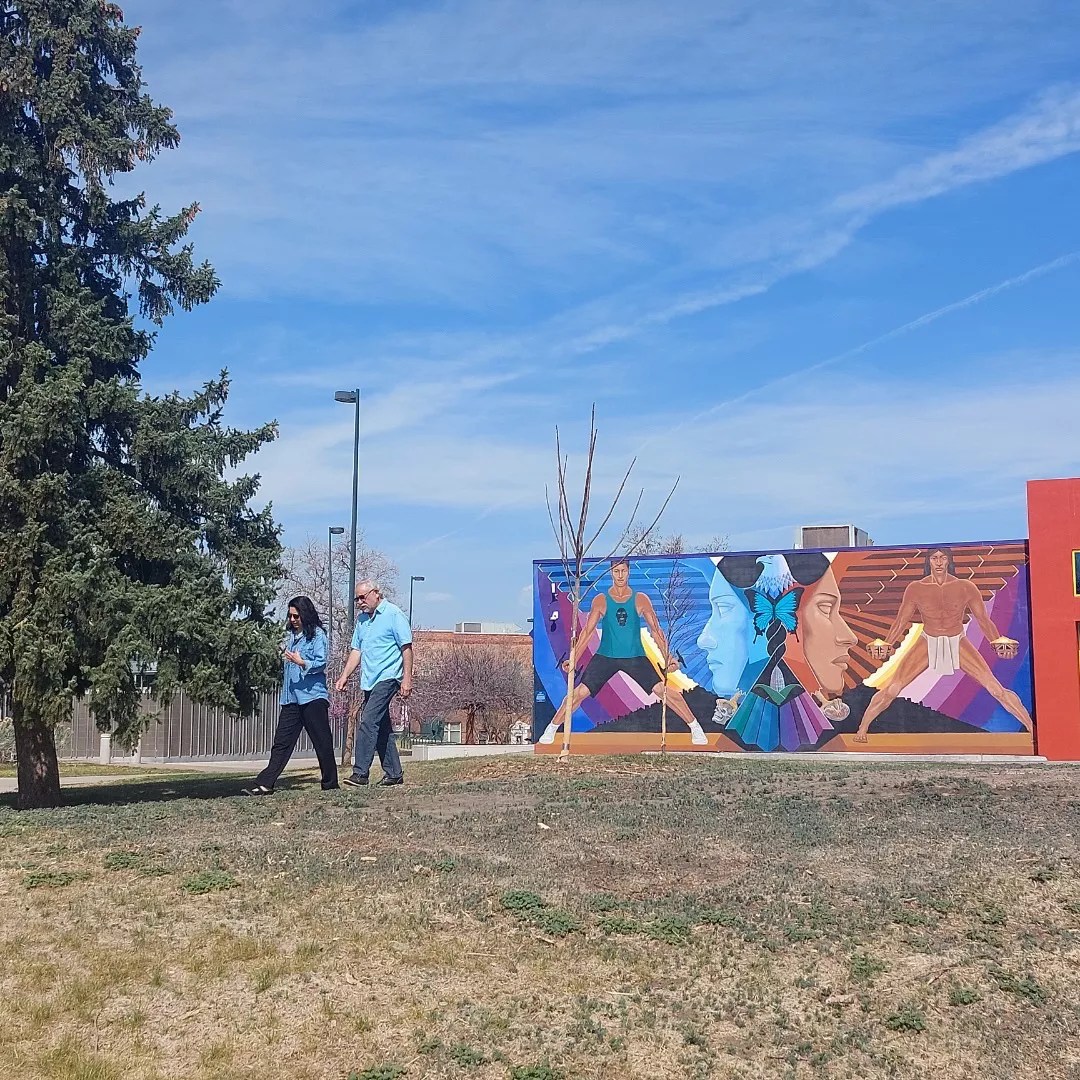
Emanuel Martinez’s 1978 mural on the rec center that introduced the La Alma name.
Emanuel Martinez
In 1971, Emanuel Martinez converted a tool shed in the park into a recreation center where he could teach arts and crafts. With input from the community, he decided to name the new building “La Alma.”
Since he “couldn’t speak much Spanish,” Martinez says, “I had no idea at the time that when we named it La Alma that we were incorrect.”
It was more about pride than grammar.
“During that time period, the renaming became part of that community control and taking back and claiming things,” Garcia says. “It was a sign of defiance to go into the park and use the other name rather than use the name the city imposed on it. It was the same thing as calling ourselves Chicanos rather than Spanish or Mexican.”
“We really felt that we needed to change the name,” Martinez adds. “It all started in west Denver, but other Chicano communities started doing the same by taking over their swimming pools and doing murals. We really created a movement throughout the city of Denver at that time.”
The renaming of Chicano neighborhoods “was very informal,” Garcia recalls. “I don’t think anybody was interested in going through a formal renaming or city review process.”
But finally, the city did get involved. In 1987, “Mestizo” was added to the name of Curtis Park. And after decades of debate, in 2020 Denver City Council finally changed the name of Columbus Park to La Raza Park, a label the community had used for decades.
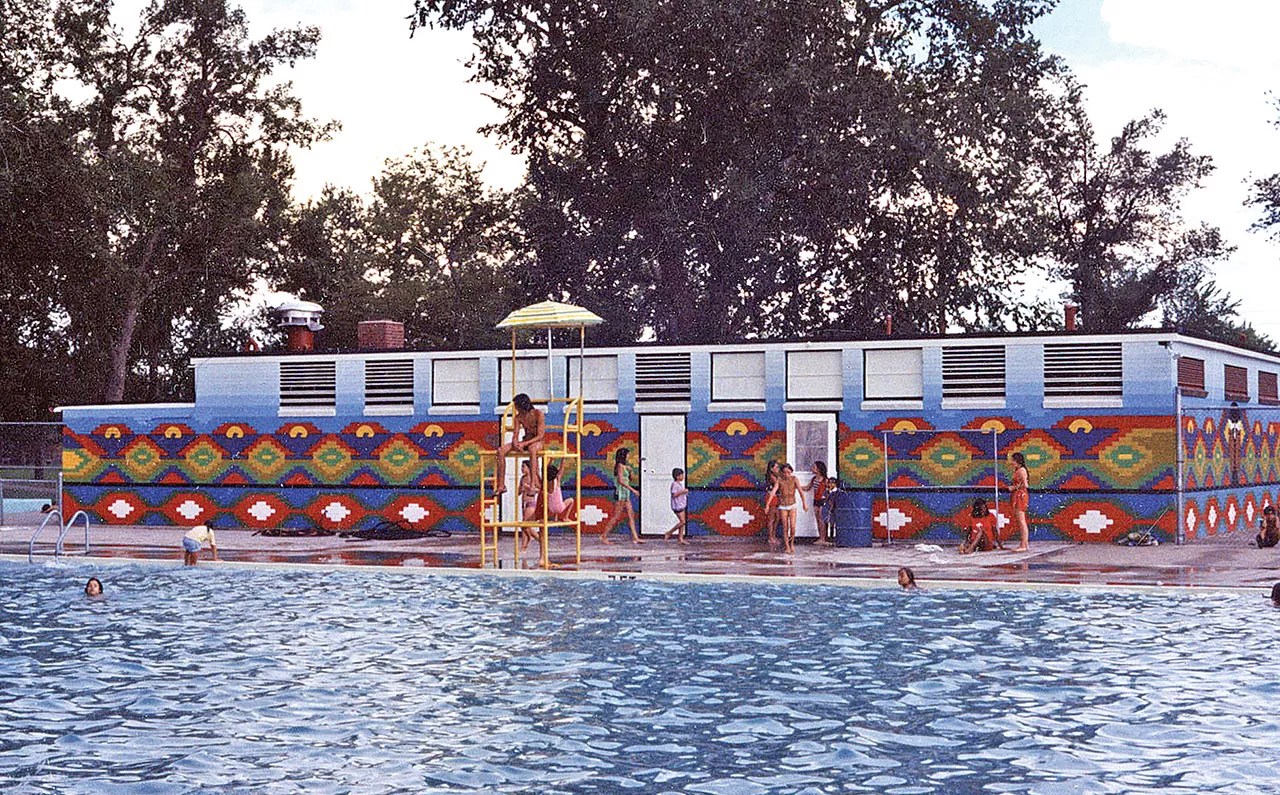
This mural by the La Alma pool no longer exists.
Lucha Martinez de Luna
By then, the city had officially renamed Lincoln Park to La Alma Lincoln Park. That move came in 2013. Six years later, La Alma Lincoln Park became only the second historic cultural district in Denver. Last year, the Chicano/a/x Community Murals of Colorado Project was honored by the National Trust for Historic Preservation.
The first murals in the city were in the La Alma neighborhood, Garcia says, but it was Martinez’s mural, painted in 1978 on the side of what was already known as the La Alma Recreation Center, that really helped solidify the area’s identity.
Martinez de Luna loves to tell the story of the neighborhood and its name, “because the reality is, that generation was denied and weren’t able to speak their language,” she says. “They weren’t taught it, so it’s very profound.”